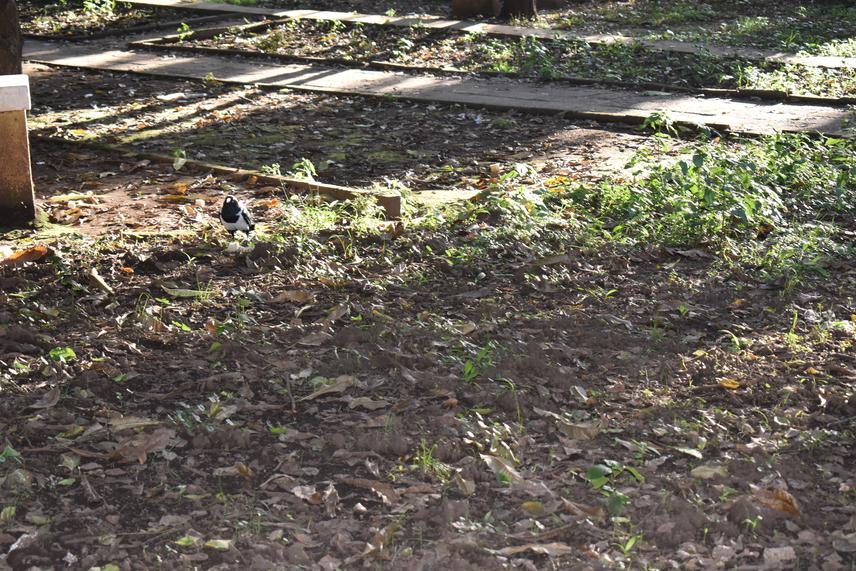Gerubin Liberath Msaki
Other projects
19 Aug 2020
More than Pollutant Removal: A study on Constructed Wetlands as Biodiversity Hotspots
Constructed Wetlands-Waste Stabilization Ponds (CW-WSPs), wastewater treatment systems and green spaces in urban ecosystems have untapped potential for biodiversity enhancement and development. Birds, invertebrates, small mammals and reptiles that had been displaced by human development found refuge in these ecosystems; additionally, a variety of other useful resources that can be used in agriculture and forest development may be recovered.

Pied crow spotted during bird survey in urban public garden in Arusha. © Gerubin Msaki.
Despite the great innovation in developing wastewater treatment technologies, the uptake of such eco-friendly projects in many developing countries is not widespread. Wastewater treatment technologies such as constructed wetlands and waste stabilization ponds have great potential to enhance the biodiversity of birds, insects, small mammals and reptiles. In addition, urban green spaces provide the opportunity to conserve native biodiversity in cities. In Tanzania, there have been several initiatives and projects, most of which integrate waste stabilization ponds and constructed wetlands to treat wastewater in municipal cities such as Moshi, Arusha, Dar es Salaam, Iringa, Mbeya and Mwanza. Also, several businesses in the country have implemented wastewater treatment projects (Njau and Machunda 2013; Kipasika et al., 2016). Apart from the primary benefits of treating wastewater, the established wastewater treatment systems have been documented to be important hotspots for biodiversity enhancement in urban environments (Msaki et al., 2023). On the other hand, most cities in Tanzania have green spaces and their biodiversity potential has not been well documented.
Despite the initiatives put forth in developing wastewater treatment projects in the country, the adoption and sustainability of these modern wastewater treatment systems, and green spaces by the communities, public and private institutions, has been relatively low and mostly unprogressive. Studies reveal that uptake by the community and government on any project solely depends on understanding its benefits and the consequences of implementation (Saad et al., 2017; Msaki et al., 2022; Michetti et al., 2019).
This project aims to: 1) Provide awareness training on the potential of CW-WSP and green spaces in biodiversity enhancement to urban engineers, urban wildlife managers, industries, urban planners, private and other government stakeholders in selected regions of Tanzania to raise adoption of these ecofriendly technologies 2. To assess the abundance of Birds species in green spaces in selected regions of Tanzania.